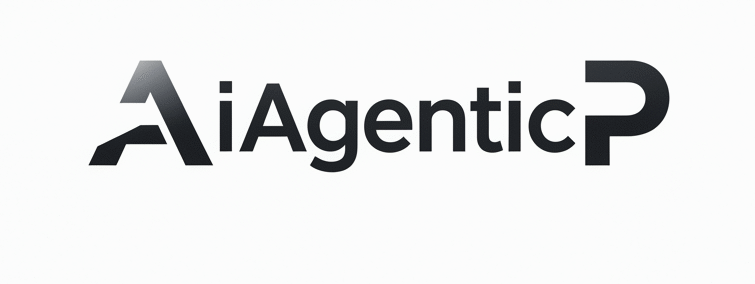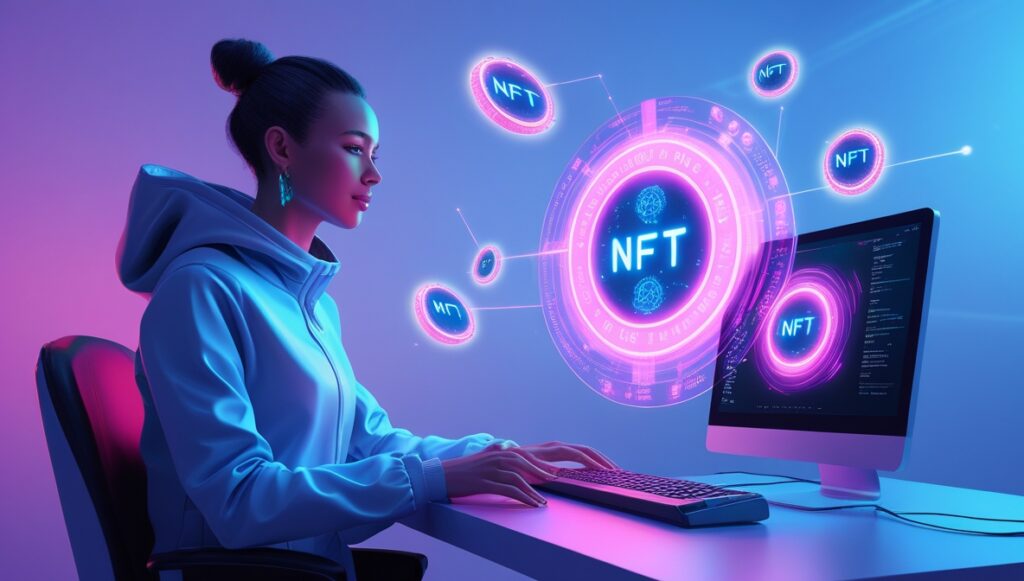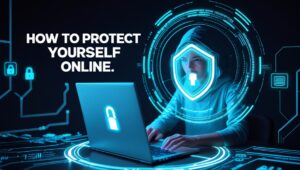NFTs (Non-Fungible Tokens) have transformed digital ownership, allowing artists, musicians, gamers, and entrepreneurs to create, sell, and trade unique assets on blockchain networks.
If you’re new to NFTs and wondering how to create your very first NFT in 2026, this guide will walk you through the process step by step no technical background required.
Step 1: Understand What an NFT Is
An NFT (Non-Fungible Token) is a unique digital asset stored on a blockchain. Unlike cryptocurrencies (like Bitcoin or Ethereum), which are interchangeable, NFTs represent one-of-a-kind assets.
Examples of NFTs include:
- Digital art and collectibles
- Music, videos, and animations
- Virtual real estate in the metaverse
- In-game assets like skins or weapons
- Tokenized documents or certificates
In short: NFTs prove ownership of digital content on the blockchain.
Step 2: Choose the Right Blockchain for Your NFT
Not all blockchains are equal when it comes to NFTs. By 2026, the most popular NFT platforms are:
- Ethereum – The pioneer, supports ERC-721 and ERC-1155 tokens.
- Polygon (MATIC) – Cheaper and eco-friendly, ideal for beginners.
- Solana – Fast transactions, widely used for gaming NFTs.
- Binance Smart Chain (BSC) – Affordable and widely supported.
If you’re a beginner, start with Polygon or Ethereum, since they have the widest marketplace support.
Step 3: Set Up a Digital Wallet
To create and sell NFTs, you need a crypto wallet that supports NFTs.
Recommended Wallets in 2026:
- MetaMask (most popular, works with Ethereum and Polygon)
- Trust Wallet (user-friendly mobile wallet)
- Phantom (great for Solana NFTs)
Tip: Always write down your wallet’s seed phrase and store it offline. This is the only way to recover your wallet if lost.
Step 4: Add Cryptocurrency to Your Wallet
Creating NFTs isn’t completely free , you may need to pay “gas fees” (transaction fees).
- On Ethereum, fees vary but can be high.
- On Polygon, gas fees are extremely low.
Buy a small amount of crypto (ETH, MATIC, or SOL) from a trusted exchange like Coinbase, Binance, or Kraken, and transfer it to your wallet.
Step 5: Choose an NFT Marketplace
NFT marketplaces are where you can mint (create), buy, and sell NFTs.
Top NFT Platforms in 2026:
- OpenSea (largest marketplace, supports Ethereum & Polygon)
- Rarible (easy-to-use platform, customizable options)
- Magic Eden (popular for Solana-based NFTs)
- Binance NFT (great for beginners, supports multiple blockchains)
For your first NFT, OpenSea or Rarible is the best choice because of simplicity and reach.
Step 6: Create (Mint) Your First NFT
Now comes the exciting part: minting your NFT.
Step-by-Step Process (Example: OpenSea)
- Connect your wallet to OpenSea.
- Click on “Create” at the top-right corner.
- Upload your digital file (image, audio, video, or 3D model).
- Enter details:
- Name (title of your NFT).
- Description (what makes it unique).
- Collection (optional, for multiple NFTs).
- Choose the blockchain (Ethereum or Polygon).
- Click “Create” to mint your NFT.
Congratulations — your first NFT is live!
Step 7: List Your NFT for Sale
If you want to sell your NFT:
- Go to your NFT in the marketplace.
- Click “Sell.”
- Choose a pricing option:
- Fixed Price – Set a price (e.g., 0.05 ETH).
- Auction – Let buyers bid.
- Confirm the listing and pay any required fees.
Your NFT is now available to buyers worldwide.
Step 8: Promote Your NFT
Creating an NFT is just the beginning ,the real challenge is getting people to notice it.
Best Promotion Strategies (2026):
- Share on Twitter (X), Discord, and Telegram NFT groups.
- Showcase on Instagram and TikTok with visuals.
- Join NFT communities on Reddit and LinkedIn.
- Collaborate with other NFT creators or influencers.
Pro Tip: Create a story or utility around your NFT. People buy NFTs not just for art, but for value, rarity, and community.
Step 9: Stay Safe While Creating NFTs
NFT space is exciting, but scams are common. Protect yourself by:
- Only using official marketplaces and wallets.
- Avoiding suspicious links and “free NFT airdrops.”
- Never sharing your wallet’s seed phrase.
Step 10: Keep Learning & Growing in the NFT Space
NFTs are still evolving, and in 2026, they’re expanding into:
- Gaming economies
- Virtual real estate
- Music royalties
- AI-generated art
- Metaverse collectibles
The more you explore, the better your skills and opportunities will grow.
Common Mistakes Beginners Make (and How to Avoid Them)
- Minting on the wrong blockchain → Choose one with good marketplace support.
- Overpricing NFTs → Start small and learn the market.
- Neglecting promotion → Marketing is as important as minting.
- Not securing wallets → Always back up your keys.
Creating your first NFT in 2026 is easier than ever th,anks to beginner-friendly tools, affordable blockchains, and accessible marketplaces.
By following this step-by-step guide, you’ve learned how to:
- Understand NFTs
- Set up a wallet
- Choose a blockchain & marketplace
- Mint your NFT
- List it for sale
- Promote it safely
Questions people asked on How to Create NFT
What is the easiest way to create an NFT in 2026?
The easiest way is to use a beginner-friendly marketplace like OpenSea or Rarible, connect your wallet (e.g., MetaMask), upload your digital file, and mint it as an NFT on Ethereum or Polygon.
Do I need coding skills to create an NFT?
No, you don’t need coding skills. Most marketplaces allow you to mint NFTs with simple steps like uploading a file and filling out details. However, coding knowledge (like Solidity) helps if you want to create custom smart contracts.
How much does it cost to mint an NFT in 2026?
It depends on the blockchain. Ethereum can have higher gas fees, while Polygon and Solana are very low-cost, often just a few cents per NFT.
Can I create an NFT for free?
Yes, some marketplaces like OpenSea offer “lazy minting”, where your NFT is minted only when purchased, saving you upfront fees.
Where can I sell my NFTs?
Popular marketplaces include OpenSea, Rarible, Magic Eden, and Binance NFT. Your choice depends on the blockchain you’re using.
Are NFTs still worth creating in 2026?
Yes — NFTs are evolving beyond digital art into music, gaming, metaverse assets, and real-world tokenization. If done strategically, NFTs still offer strong opportunities.
How do I promote my NFT after creating it?
You can promote NFTs on Twitter (X), Discord groups, Instagram, TikTok, and by joining NFT communities. Building a personal brand and story around your NFT greatly improves sales chances.
Is it safe to create NFTs?
Yes, but you must use trusted marketplaces and wallets, avoid clicking on suspicious links, and never share your wallet seed phrase.
Whether you’re an artist, entrepreneur, or curious learner, NFTs open up endless opportunities in the digital economy.
Start small, stay consistent, and who knows your first NFT could be the beginning of a new career in Web3.





